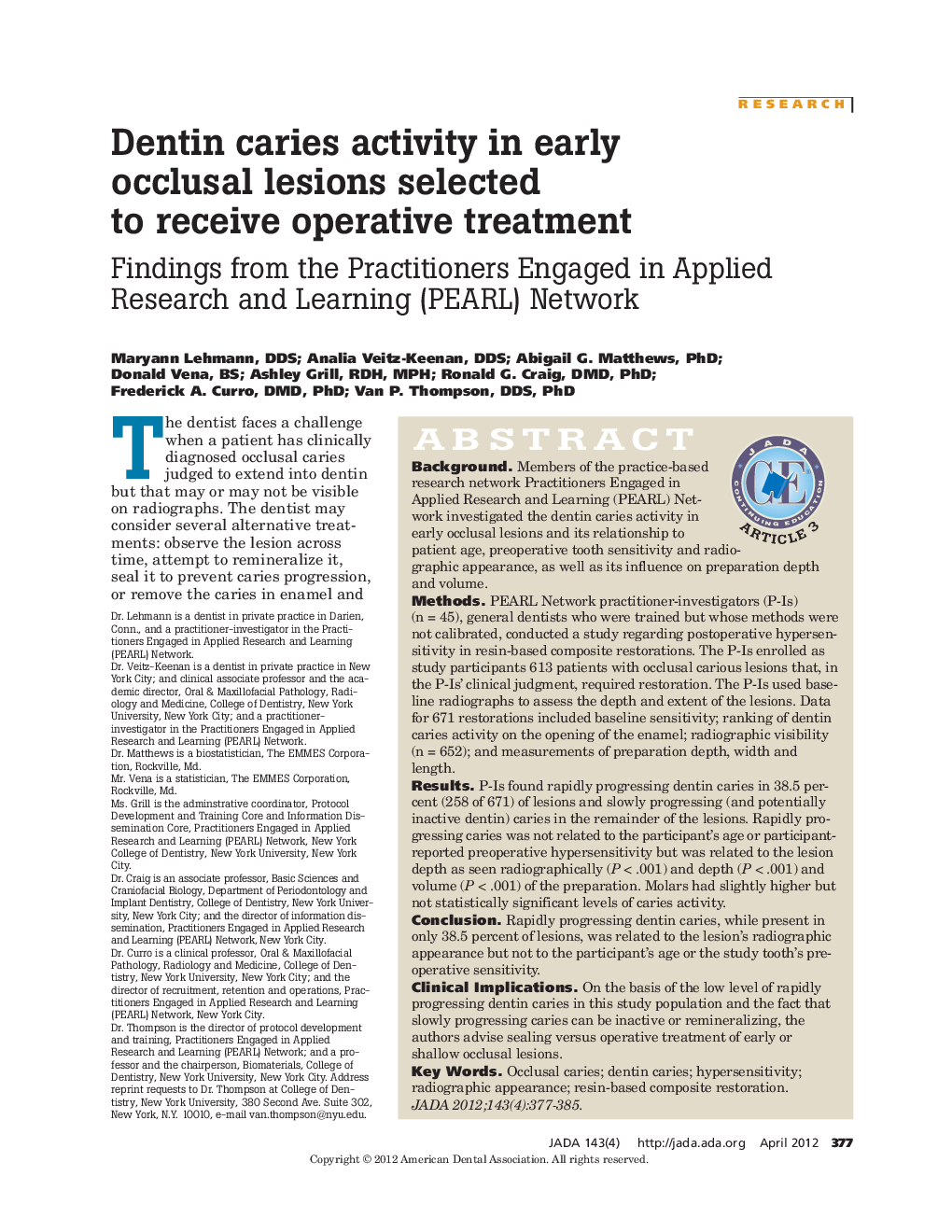| Article ID | Journal | Published Year | Pages | File Type |
|---|---|---|---|---|
| 3137700 | The Journal of the American Dental Association | 2012 | 9 Pages |
BackgroundMembers of the practice-based research network Practitioners Engaged in Applied Research and Learning (PEARL) Network investigated the dentin caries activity in early occlusal lesions and its relationship to patient age, preoperative tooth sensitivity and radiographic appearance, as well as its influence on preparation depth and volume.MethodsPEARL Network practitioner-investigators (P-Is) (n = 45), general dentists who were trained but whose methods were not calibrated, conducted a study regarding postoperative hypersensitivity in resin-based composite restorations. The P-Is enrolled as study participants 613 patients with occlusal carious lesions that, in the P-Is' clinical judgment, required restoration. The P-Is used baseline radiographs to assess the depth and extent of the lesions. Data for 671 restorations included baseline sensitivity; ranking of dentin caries activity on the opening of the enamel; radiographic visibility (n = 652); and measurements of preparation depth, width and length.ResultsP-Is found rapidly progressing dentin caries in 38.5 percent (258 of 671) of lesions and slowly progressing (and potentially inactive dentin) caries in the remainder of the lesions. Rapidly progressing caries was not related to the participant's age or participant-reported preoperative hypersensitivity but was related to the lesion depth as seen radiographically (P < .001) and depth (P < .001) and volume (P < .001) of the preparation. Molars had slightly higher but not statistically significant levels of caries activity.ConclusionRapidly progressing dentin caries, while present in only 38.5 percent of lesions, was related to the lesion's radiographic appearance but not to the participant's age or the study tooth's pre-operative sensitivity.Clinical ImplicationsOn the basis of the low level of rapidly progressing dentin caries in this study population and the fact that slowly progressing caries can be inactive or remineralizing, the authors advise sealing versus operative treatment of early or shallow occlusal lesions.
